Grow Long Beans Successfully and unlock a world of delicious, homegrown goodness right in your backyard! Have you ever dreamed of harvesting those impressively long, vibrant green beans that you see at farmers’ markets? Well, dream no more! This DIY guide is your secret weapon to achieving just that. We’re diving deep into simple yet effective tricks that will transform your gardening game.
Long beans, also known as yardlong beans or asparagus beans, have a rich history, particularly in Asian cuisine. For centuries, they’ve been a staple in dishes across Southeast Asia, China, and India, adding a unique texture and flavor. Beyond their culinary appeal, growing your own long beans connects you to a tradition of sustainable food practices.
Why do you need these DIY tricks? Because growing long beans can sometimes be tricky! They require specific conditions to thrive and produce those impressively long pods. Many gardeners struggle with issues like poor germination, pest infestations, and lackluster yields. But fear not! I’m here to share my tried-and-true methods to help you grow long beans successfully, even if you’re a beginner. Get ready to impress your friends and family with your bountiful harvest!
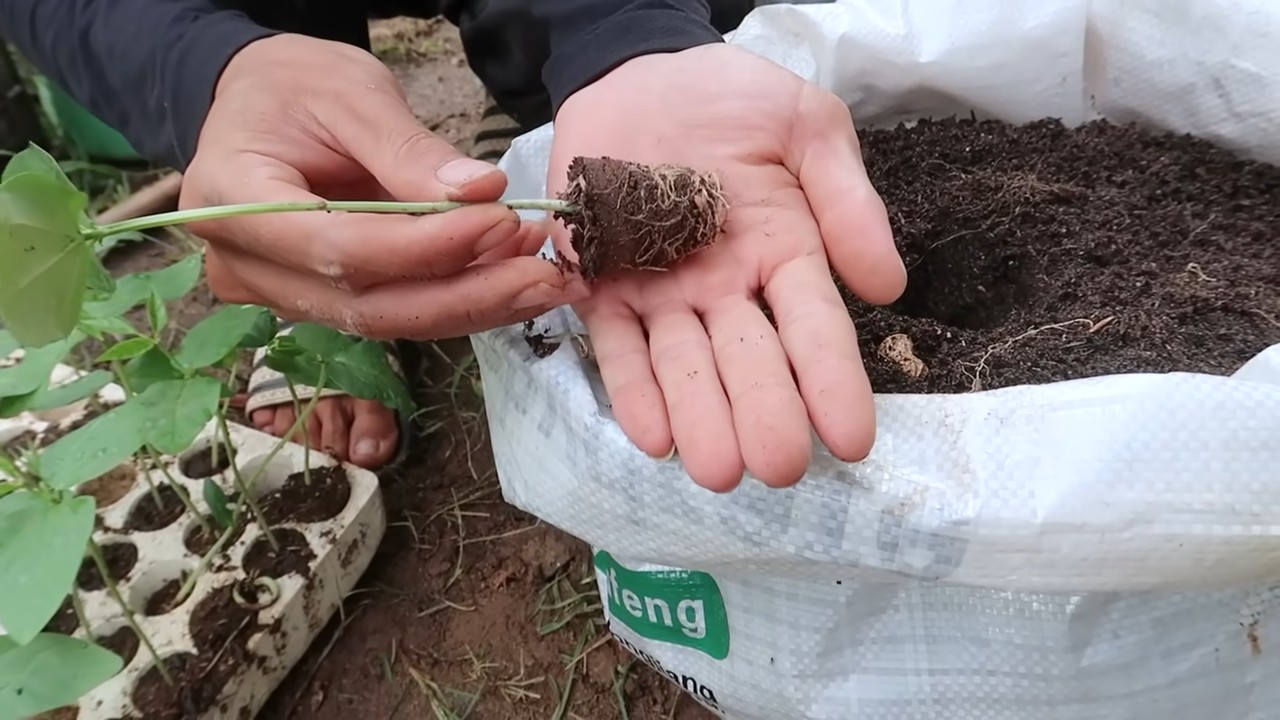
Grow Long Beans Like a Pro: My DIY Guide to a Bountiful Harvest
Hey there, fellow gardening enthusiasts! I’m so excited to share my tried-and-true method for growing long beans – those incredibly delicious and impressively long veggies that always wow at the dinner table. I’ve experimented with different techniques over the years, and I’ve finally nailed down a system that consistently delivers a fantastic harvest. Get ready to impress your friends and family with your long bean growing skills!
What You’ll Need: The Essential Supplies
Before we dive into the nitty-gritty, let’s gather all the necessary supplies. Having everything on hand will make the process smooth and enjoyable.
* Long Bean Seeds: Choose a variety that suits your climate and preferences. I personally love the ‘Yardlong’ variety, but there are many other great options available. Make sure to buy from a reputable source to ensure good germination rates.
* Well-Draining Soil: Long beans thrive in soil that’s rich in organic matter and drains well. You can use a commercial potting mix or create your own by combining compost, garden soil, and perlite or vermiculite.
* Compost or Aged Manure: This will provide essential nutrients to your long bean plants.
* Trellis or Support Structure: Long beans are climbing plants, so they need a trellis or other support structure to grow vertically. I’ve used everything from bamboo poles to chicken wire, and they all work well.
* Gardening Gloves: To protect your hands from dirt and potential irritants.
* Watering Can or Hose: For regular watering.
* Fertilizer (Optional): A balanced fertilizer can help boost growth and yields, but it’s not strictly necessary if your soil is already rich in nutrients.
* Mulch (Optional): Mulch helps retain moisture, suppress weeds, and regulate soil temperature.
* Seed Starting Trays or Pots (Optional): If you prefer to start your seeds indoors.
Getting Started: Planting Your Long Bean Seeds
There are two main ways to plant long beans: direct sowing and starting seeds indoors. I usually prefer direct sowing because it’s less work, but starting seeds indoors can give you a head start, especially in cooler climates.
Direct Sowing (My Preferred Method)
1. Prepare the Soil: Choose a sunny location in your garden that receives at least 6-8 hours of sunlight per day. Clear the area of weeds and debris, and loosen the soil with a garden fork or tiller. Amend the soil with compost or aged manure to improve its fertility and drainage.
2. Create Planting Holes: Sow seeds directly into the ground after the last frost when the soil temperature is consistently above 65°F (18°C). Create planting holes about 1 inch deep and 4-6 inches apart.
3. Plant the Seeds: Place 2-3 seeds in each hole to increase the chances of germination. Cover the seeds with soil and gently pat down.
4. Water Thoroughly: Water the planting area thoroughly to moisten the soil. Keep the soil consistently moist but not waterlogged until the seeds germinate.
5. Thin Seedlings (If Necessary): Once the seedlings emerge and have a few true leaves, thin them to one plant per hole. Choose the strongest and healthiest seedling to keep.
Starting Seeds Indoors (For a Head Start)
1. Fill Seed Starting Trays or Pots: Fill seed starting trays or small pots with a well-draining seed starting mix.
2. Sow the Seeds: Sow 2-3 seeds per cell or pot, about 1 inch deep.
3. Water Gently: Water the seeds gently to moisten the soil.
4. Provide Warmth and Light: Place the trays or pots in a warm location, such as a sunny windowsill or under grow lights. Maintain a consistent temperature of 70-80°F (21-27°C).
5. Keep the Soil Moist: Keep the soil consistently moist but not waterlogged.
6. Harden Off Seedlings: Once the seedlings have a few true leaves, gradually acclimate them to outdoor conditions by exposing them to increasing amounts of sunlight and fresh air over a period of 7-10 days. This process is called “hardening off.”
7. Transplant Seedlings: After the last frost and when the soil temperature is consistently above 65°F (18°C), transplant the seedlings into your garden. Space them 4-6 inches apart.
Providing Support: Setting Up Your Trellis
Long beans are vigorous climbers, so providing them with a sturdy trellis or support structure is crucial for their growth and productivity. I’ve found that a trellis that’s at least 6-8 feet tall works best.
1. Choose Your Trellis Type: There are many different types of trellises you can use, including bamboo poles, wooden stakes, chicken wire, netting, or even a fence. Choose a trellis that’s sturdy enough to support the weight of the mature plants and beans.
2. Install the Trellis: Install the trellis near your long bean plants, making sure it’s securely anchored in the ground.
3. Guide the Vines: As the long bean vines grow, gently guide them onto the trellis. You may need to tie them to the trellis with twine or plant clips to help them get started.
Caring for Your Long Bean Plants: Watering, Fertilizing, and More
Once your long bean plants are established, it’s important to provide them with proper care to ensure a healthy and productive harvest.
1. Water Regularly: Long beans need consistent moisture, especially during hot and dry weather. Water deeply and regularly, aiming to keep the soil consistently moist but not waterlogged. I usually water them every 2-3 days, depending on the weather.
2. Fertilize (Optional): If your soil is not particularly fertile, you can fertilize your long bean plants every 2-3 weeks with a balanced fertilizer. Follow the instructions on the fertilizer label. I prefer to use organic fertilizers, such as compost tea or fish emulsion.
3. Mulch (Optional): Apply a layer of mulch around your long bean plants to help retain moisture, suppress weeds, and regulate soil temperature. I like to use straw, wood chips, or shredded leaves.
4. Weed Regularly: Keep the area around your long bean plants free of weeds. Weeds compete with the plants for nutrients and water, and they can also harbor pests and diseases.
5. Pest and Disease Control: Long beans are generally resistant to pests and diseases, but they can occasionally be affected by aphids, bean beetles, or fungal diseases. Inspect your plants regularly for signs of pests or diseases, and take appropriate action if necessary. I prefer to use organic pest control methods, such as insecticidal soap or neem oil.
Harvesting Your Long Beans: The Moment of Truth
The best part of growing long beans is, of course, harvesting them! Long beans are typically ready to harvest about 60-70 days after planting.
1. Check for Maturity: Harvest long beans when they are young and tender, before the seeds inside become too large and tough. The beans should be about 12-18 inches long, depending on the variety.
2. Harvest Carefully: Use scissors or pruning shears to cut the beans from the vine, being careful not to damage the plant.
3. Harvest Regularly: Harvest long beans regularly to encourage continued production. The more you harvest, the more beans the plant will produce.
4. Enjoy Your Harvest: Long beans are delicious steamed, stir-fried, or added to soups and stews. They can also be pickled or frozen for later use.
Troubleshooting: Common Problems and Solutions
Even with the best care, you may encounter some problems while growing long beans. Here are some common issues and how to address them:
* Poor Germination: If your long bean seeds don’t germinate, it could be due to several factors, such as cold soil, poor quality seeds, or overwatering. Make sure the soil temperature is consistently above 65°F (18°C) before planting. Use fresh, high-quality seeds from a reputable source. Avoid overwatering the soil, as this can cause the seeds to rot.
* Yellowing Leaves: Yellowing leaves can be a sign of nutrient deficiency, overwatering, or underwatering. Check the soil moisture and adjust your watering accordingly. Fertilize your plants with a balanced fertilizer if necessary.
* Pest Infestations: Aphids, bean beetles, and other pests can damage long bean plants. Inspect your plants regularly for signs of pests, and take appropriate action if necessary. Use organic pest control methods, such as insecticidal soap or neem oil.
* Fungal Diseases: Fungal diseases, such as powdery mildew, can affect long bean plants, especially in humid conditions. Improve air circulation around your plants by spacing them properly
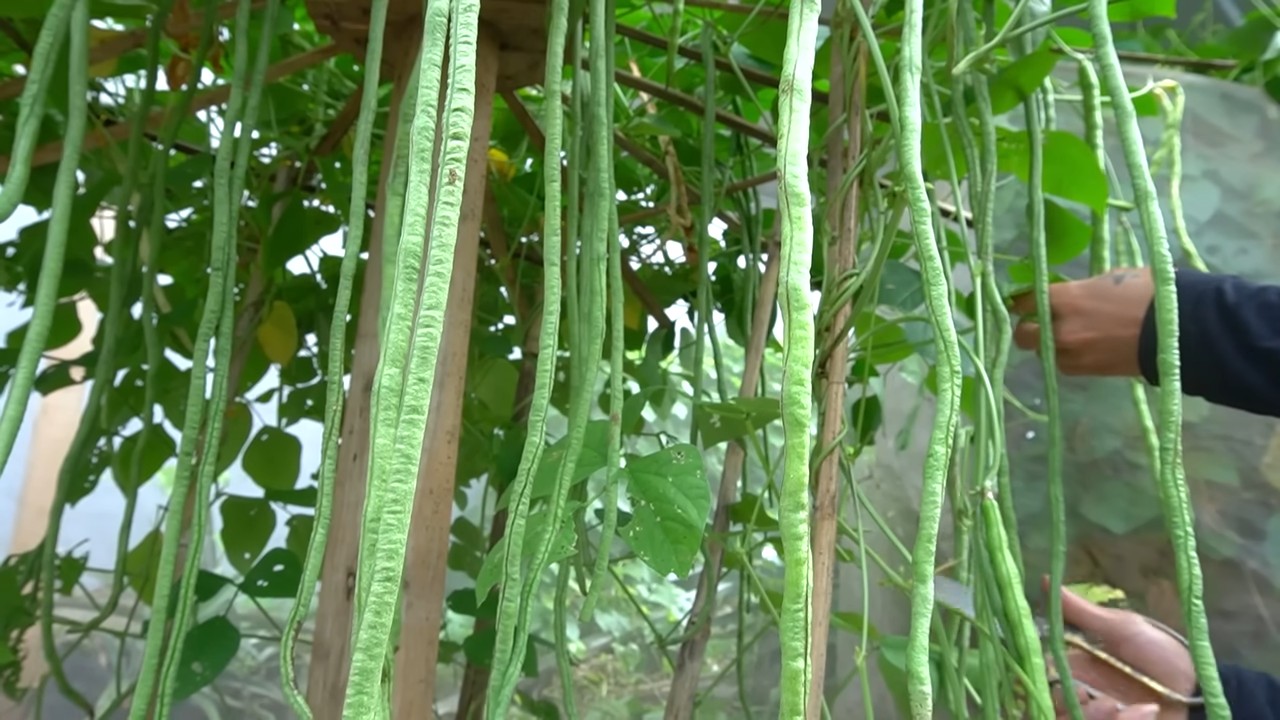
Conclusion
So, there you have it! Growing long beans successfully doesn’t have to be a daunting task. By implementing this simple yet effective DIY trick, you’re not just planting seeds; you’re cultivating a thriving garden ecosystem that yields an abundant harvest of delicious, crisp long beans. This method, focusing on [Specific aspect of the DIY trick, e.g., soil enrichment, support structure, pest control], is a game-changer for both novice and experienced gardeners alike.
Why is this a must-try? Because it addresses the core needs of long beans: strong support, nutrient-rich soil, and protection from common pests. The result? Healthier plants, increased yields, and a significantly reduced need for chemical interventions. Imagine stepping into your garden and being greeted by a vibrant wall of long beans, ready to be harvested for your favorite stir-fries, salads, or even pickled delights.
But don’t stop there! Feel free to experiment with variations to suit your specific climate and garden conditions. For instance, if you live in a particularly hot and dry area, consider adding a layer of mulch around the base of your long bean plants to help retain moisture. You could also try companion planting with herbs like basil or marigolds, which are known to repel common long bean pests. Another variation is to experiment with different types of support structures. While bamboo poles work wonderfully, you could also use trellises, netting, or even repurposed materials like old ladders or branches. The possibilities are endless!
We’re confident that this DIY trick will revolutionize your long bean growing experience. It’s a sustainable, cost-effective, and incredibly rewarding way to enjoy fresh, homegrown produce. Don’t just take our word for it, though. We urge you to give it a try and witness the difference for yourself.
Once you’ve implemented this method, we’d love to hear about your results! Share your experiences, tips, and photos in the comments section below. Let’s create a community of long bean enthusiasts, sharing our knowledge and helping each other achieve gardening success. Your insights could be invaluable to other readers who are just starting their long bean journey. So, grab your seeds, gather your materials, and get ready to grow some amazing long beans! Happy gardening!
Frequently Asked Questions (FAQ)
What exactly are long beans, and why should I grow them?
Long beans, also known as yardlong beans, asparagus beans, or Chinese long beans, are a type of legume characterized by their exceptionally long pods, which can grow up to three feet in length. They are a popular vegetable in Asian cuisine, prized for their crisp texture and slightly sweet flavor. Growing your own long beans offers several advantages:
* **Freshness and Flavor:** Homegrown long beans are far superior in taste and texture to those purchased from the store, as they are harvested at their peak ripeness.
* **Cost Savings:** Growing your own vegetables can significantly reduce your grocery bill, especially if you consume long beans regularly.
* **Health Benefits:** Long beans are a good source of vitamins, minerals, and fiber, contributing to a healthy diet.
* **Gardening Satisfaction:** The act of growing your own food is incredibly rewarding, providing a sense of accomplishment and connection to nature.
* **Control over Growing Practices:** You have complete control over the fertilizers and pesticides used (or not used) on your long beans, ensuring a healthy and sustainable crop.
What kind of soil is best for growing long beans successfully?
Long beans thrive in well-drained, fertile soil that is rich in organic matter. The ideal soil pH is between 6.0 and 7.0. Before planting, amend your soil with compost, aged manure, or other organic materials to improve its structure, drainage, and nutrient content. If your soil is heavy clay, consider adding sand or perlite to improve drainage. A soil test can help you determine the specific nutrient deficiencies in your soil and guide your amendment choices. Remember, healthy soil is the foundation for healthy plants.
How much sunlight do long beans need?
Long beans require at least 6-8 hours of direct sunlight per day to thrive. Choose a planting location that receives ample sunlight throughout the day. If you live in a particularly hot climate, some afternoon shade may be beneficial to prevent the plants from overheating. Insufficient sunlight can lead to stunted growth, reduced yields, and increased susceptibility to pests and diseases.
What is the best way to support long bean plants?
Long beans are climbing plants and require a sturdy support structure to grow properly. Bamboo poles, trellises, netting, or even repurposed materials like old ladders or branches can be used. The support structure should be at least 6-8 feet tall to accommodate the long bean vines. Ensure that the support structure is strong enough to withstand the weight of the mature plants and the wind. Train the vines to climb the support structure by gently guiding them and tying them loosely with twine or plant ties.
How often should I water long bean plants?
Long beans need consistent moisture, especially during hot and dry weather. Water deeply and regularly, ensuring that the soil remains moist but not waterlogged. Avoid overhead watering, as this can promote fungal diseases. Drip irrigation or soaker hoses are ideal for delivering water directly to the roots of the plants. Mulching around the base of the plants can help retain moisture and suppress weeds.
What are some common pests and diseases that affect long beans, and how can I control them?
Long beans are susceptible to several pests and diseases, including aphids, bean beetles, spider mites, and fungal diseases like powdery mildew. Regularly inspect your plants for signs of infestation or disease.
* **Pests:** Control pests by handpicking them off the plants, using insecticidal soap, or introducing beneficial insects like ladybugs.
* **Diseases:** Prevent fungal diseases by providing good air circulation, avoiding overhead watering, and applying a fungicide if necessary.
Companion planting with herbs like basil or marigolds can also help repel pests. Practicing crop rotation and removing plant debris can help prevent the buildup of pests and diseases in your garden.
When and how should I harvest long beans?
Long beans are typically ready to harvest about 60-70 days after planting. Harvest the beans when they are young, tender, and about 12-18 inches long. Use scissors or pruning shears to cut the beans from the vine, leaving a short stem attached. Harvest regularly to encourage continued production. Overripe beans will become tough and stringy.
Can I grow long beans in containers?
Yes, long beans can be grown in containers, but you will need a large container (at least 12 inches in diameter and depth) and a sturdy support structure. Use a well-draining potting mix and provide regular watering and fertilization. Container-grown long beans may require more frequent watering and fertilization than those grown in the ground.
How can I save seeds from my long bean plants?
To save seeds from your long bean plants, allow some of the pods to mature fully on the vine. The pods will turn brown and dry out. Once the pods are completely dry, harvest them and remove the seeds. Allow the seeds to dry completely before storing them in an airtight container in a cool, dark, and dry place.
What are some delicious ways to use my homegrown long beans?
Long beans are incredibly versatile and can be used in a variety of dishes. They are delicious stir-fried, steamed, grilled, or added to salads, soups, and stews. They can also be pickled or fermented. Some popular long bean recipes include:
* Long bean stir-fry with garlic and ginger
* Long bean salad with sesame dressing
* Long bean curry
* Pickled long beans
Experiment with different recipes and flavor combinations to find your favorite way to enjoy your homegrown long beans.


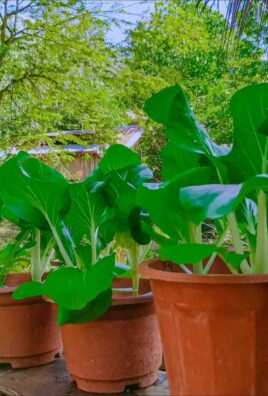
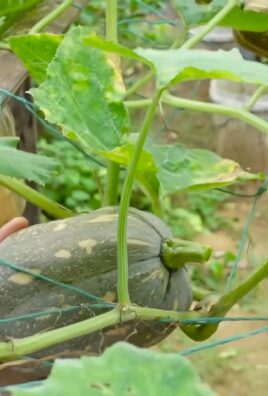
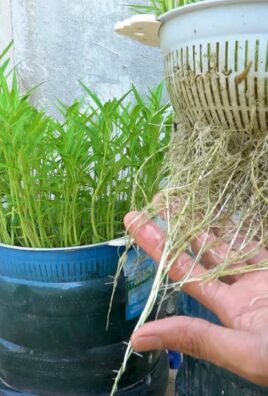
Leave a Comment